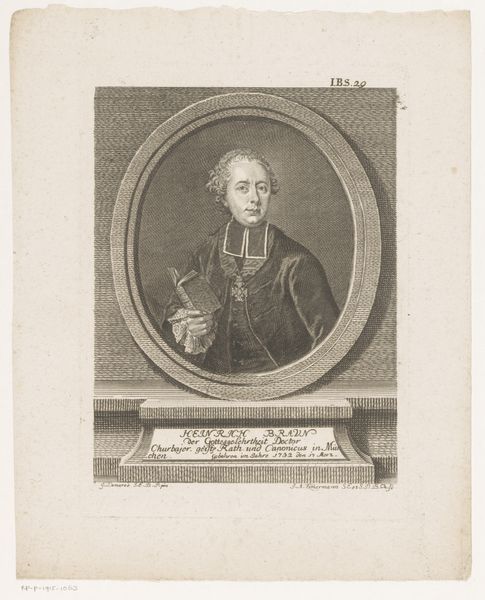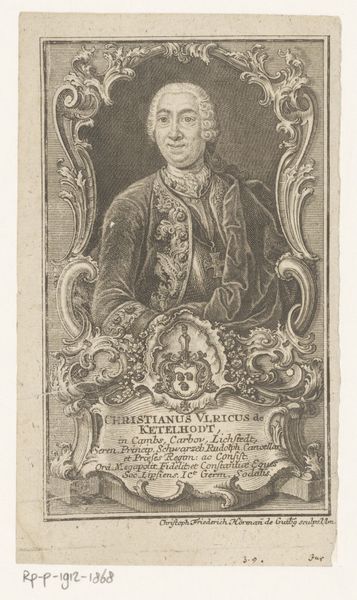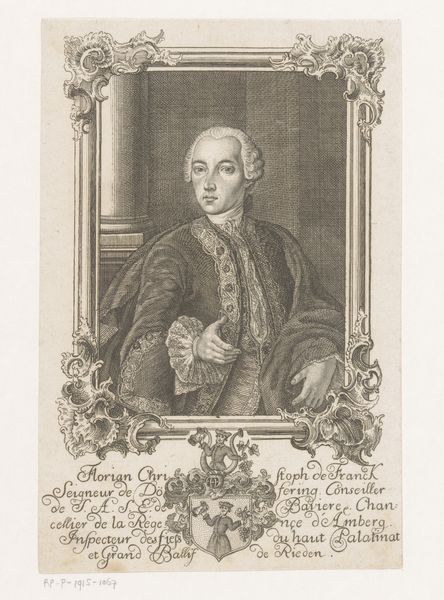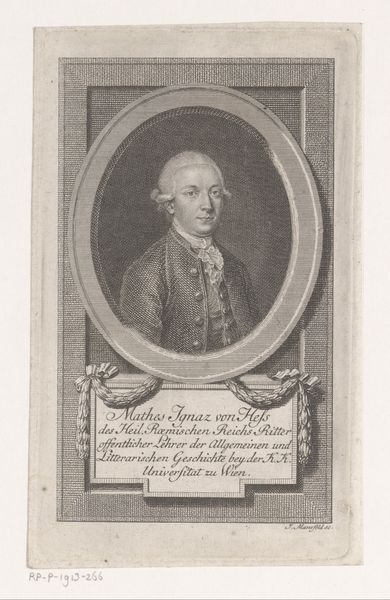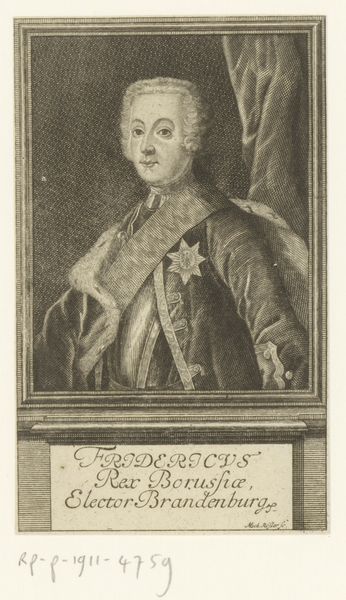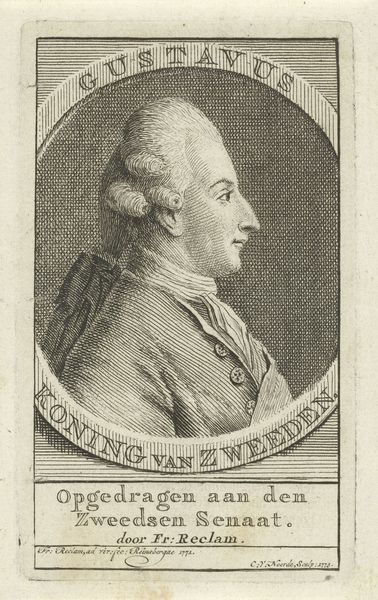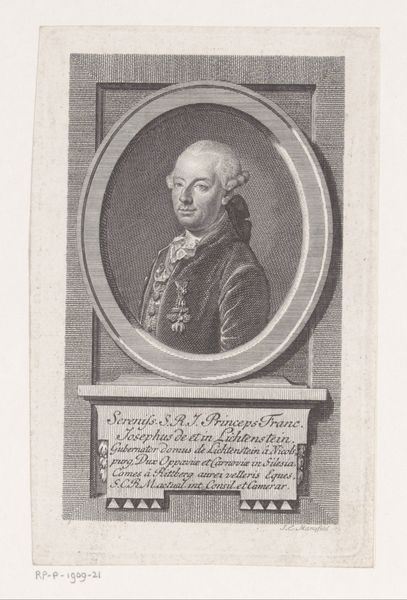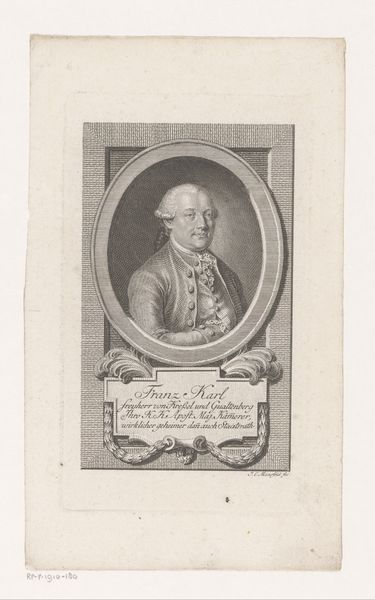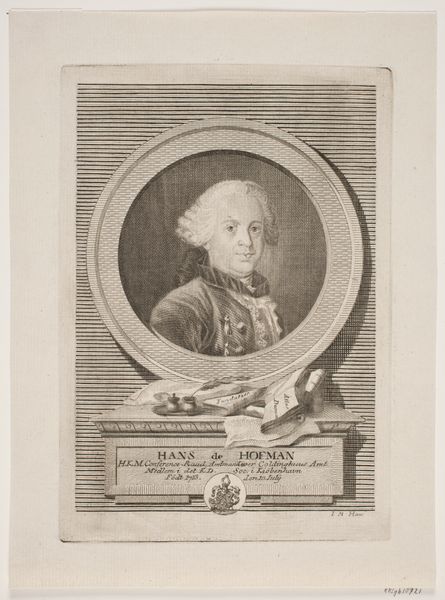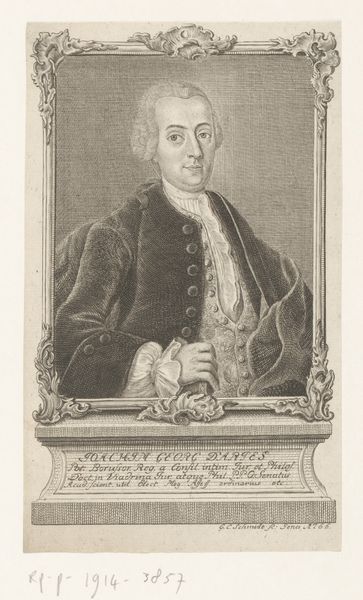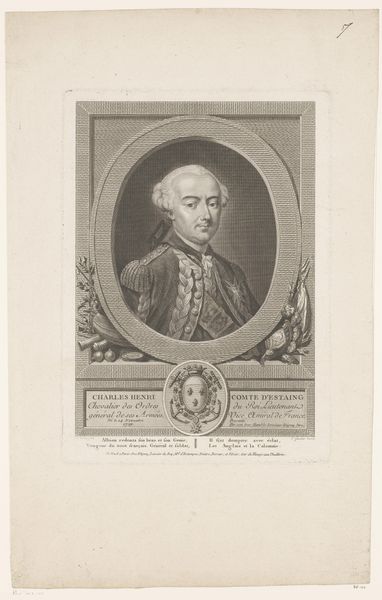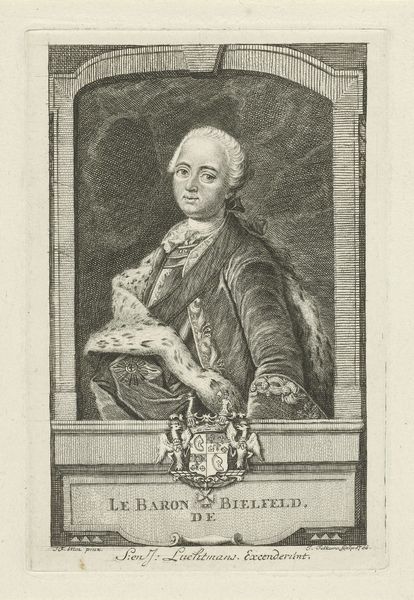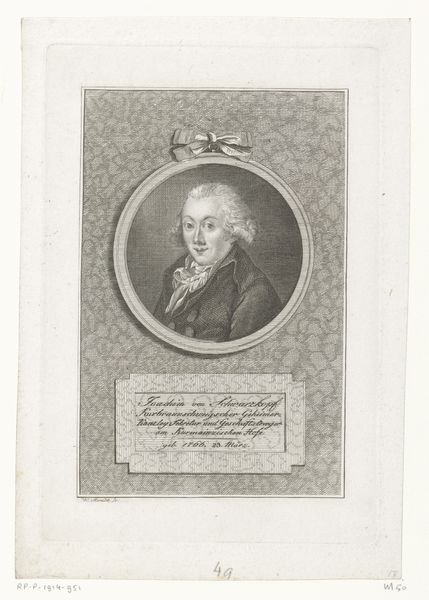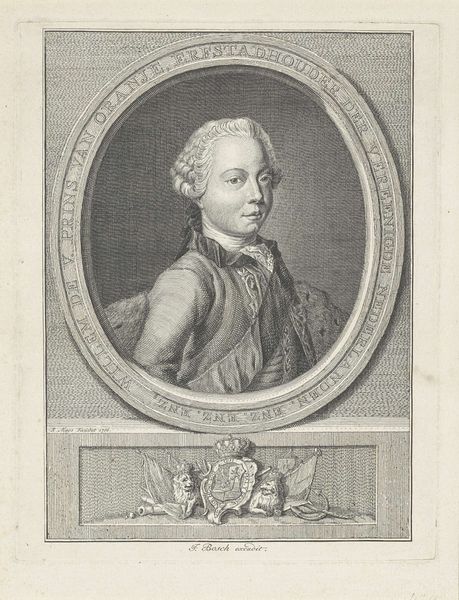
print, engraving
#
portrait
#
baroque
# print
#
old engraving style
#
history-painting
#
engraving
Dimensions: height 94 mm, width 49 mm
Copyright: Rijks Museum: Open Domain
Curator: Before us we have "Portret van Friedrich Heinrich Carl van Pruisen," an engraving crafted by Johann David Schleuen, dating from around 1721 to 1771. It currently resides here at the Rijksmuseum. Editor: There’s an immediate formality, even stiffness to this image, isn’t there? The stark lines of the engraving, the subject's rigid profile. It speaks to a very particular era and societal structure. Curator: The lines created in this Baroque portrait certainly give that effect; note the intricacy in Schleuen's technique. Look closely at the meticulous cross-hatching, which creates the subtle gradations of tone defining Prince Frederick’s face and attire. This wasn't merely representational; it was a demonstration of skill. Editor: Absolutely, the Prince is presented almost as an emblem. The laurels surrounding the inscription bearing his name and title are not just decorative, are they? Laurel wreaths throughout the ages have symbolized triumph and status. The frame motif around his likeness, with its sharp, classical lines, speaks of controlled authority and self-possession, as one might expect from Prussian aristocracy. Curator: Indeed, that ornate frame further separates and elevates the subject within. And that placement is enhanced further by the way light is handled: see how Schleuen manipulates illumination to define form and draw the eye directly to Prince Frederick’s features, accentuating the precision of line. Editor: I read something almost mournful here, beneath all of the formal presentation. Think about how printed images allowed people to remember or visualize people that might never see in person, and how these portraits may represent figures we only see printed or shared with other aristocrats. It preserves not just the man but also a certain idea of power—rigid, contained, perhaps already fading. Curator: Interesting to interpret the medium that way, for beyond representing the individual likeness, Schleuen demonstrates through skillful rendering that such techniques embody particular status hierarchies—social rank solidified through line and form. Editor: Ultimately, seeing him rendered through this engraved medium evokes a palpable sense of temporal distance, even melancholy, especially compared to contemporary artistic practices. Curator: Precisely, such visual structures also allow insight into cultural value through the work's intrinsic visual rhetoric; indeed a portrait as an object in its own time.
Comments
No comments
Be the first to comment and join the conversation on the ultimate creative platform.
